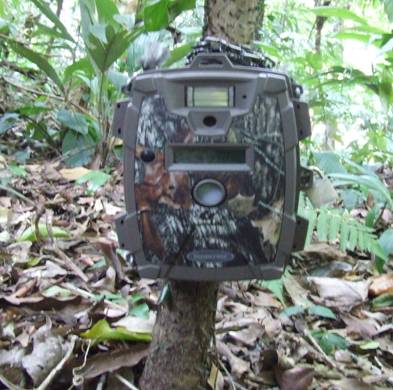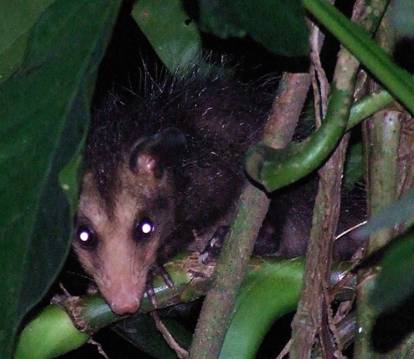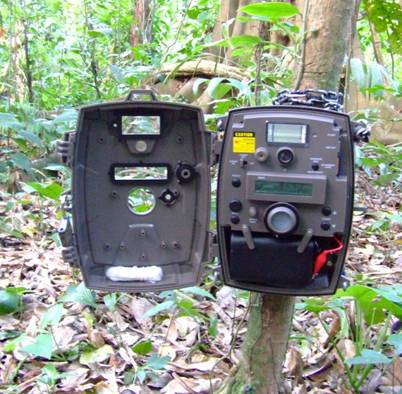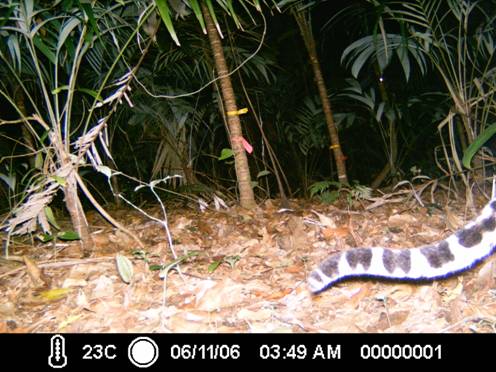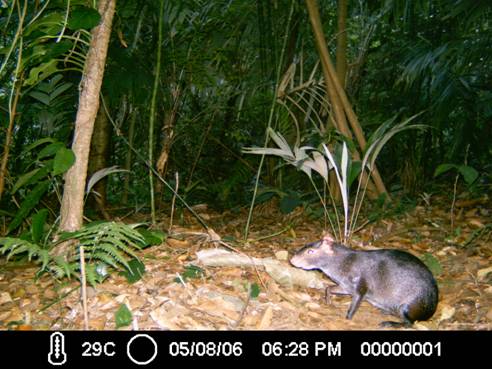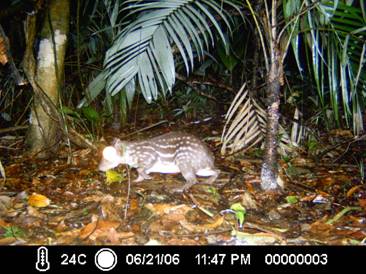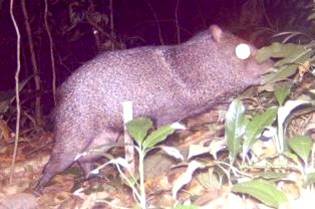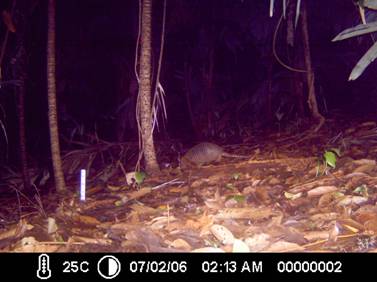STUDY OF TERRESTRIAL TROPICAL RAIN
FOREST MAMMALS USING NON INVASIVE TECHNIQUES |
|
LABORATORIO DE PRIMATOLOGIA Estación de Biología Tropical "Los Tuxtlas", Instituto de Biología, Universidad Nacional Autónoma de México |
México occupies a predominant
place in the world because of the richness of its mammal fauna, about 450
species. In tropical rain forests, small, medium and large size mammals are
particularly sensitive to habitat loss and fragmentation caused by human
activity, and their populations are also much impacted by hunting and
trafficking. These pressures have resulted in local extinction of populations
and species and in remnant populations living under precarious ecological and demographic
conditions.
As a result of their cryptic
habits and of the fact that many species are nocturnal, little is known about
terrestrial mammal populations in tropical rain forests. In addition, most of
these mammals are sensitive to the presence of humans in their habitat, further
complicating the possibility to study them. The use of camera-traps allows the
investigation of terrestrial mammal populations and the study of behavioral
aspects of particular species, without interfering with their habits and
behavior.
Camera traps permit to investigate
terrestrial mammals that also live at low densities, and are useful for
recognizing species that are difficult to identify by their tracks or other
means. With camera-traps, one can obtain data to estimate population density,
to assess activity patterns and habitat use, and to study behavior patterns.
|
|
|
|
|
|
Our study sites are Los Tuxtlas (southern ·
To determine the medium and large size mammals that
can be detected with the camera-traps ·
To assess the relationship between capture frequency
and diurnal and nocturnal activity ·
To assess the relationship between frequency of
capture and general climatic conditions ·
To map over the annual cycle the seasonality of
detection of each mammal species captured by the camera-traps |
With the use of camera-traps, one can
record species that are difficult to observe such as felids, small rodents, and
marsupials among others, without disturbing their behaviors.
|
Tayasu
tajacu |
|
Leopardos pardalis |
Dasyprocta mexicana |
When this technique is complemented with line
transects and/or trail sampling and other methods (e.g. tracks), it can provide
very accurate and reliable information about the terrestrial mammals present
and/or active in a given area. Such studies can be implemented not only for
inventories, but also for medium and long term monitoring of the mammal
populations. Importantly, the use of camera-traps can be a powerful
conservation tool, both at a local and regional levels (remember, a picture is
worth a thousand words !).
|
Agouti paca |
Tayasu
tajacu |
Dasypus novemcinctus |
For further information on this program, please
contact <[email protected]>
Support the conservation of tropical rain forests in Mexico
Copyright @ 2007 Alejandro
Estrada
